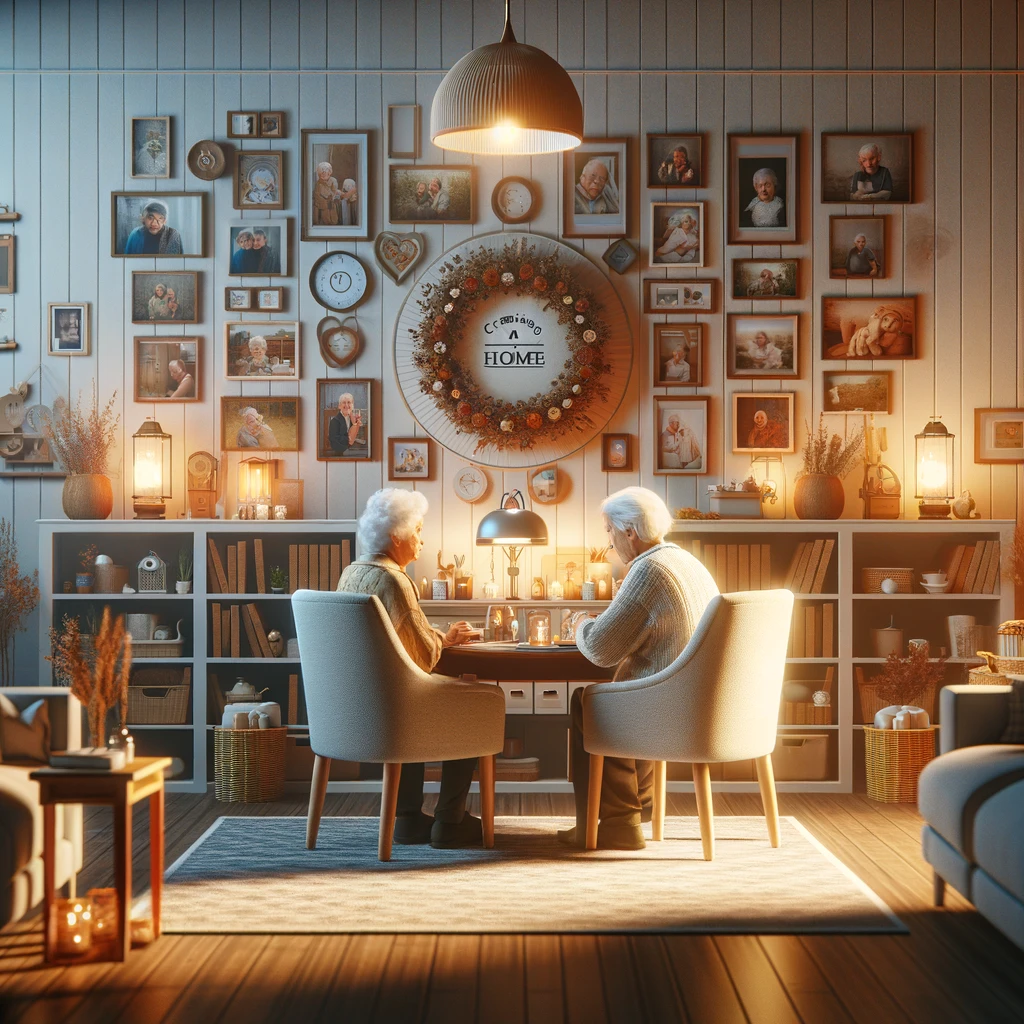Designing a Personal Environment in Nursing Homes: The Key to Improving Residents' Quality of Life
Nursing Homes

 280
280 
Designing a Personal Environment in Nursing Homes: The Key to Improving Residents' Quality of Life
In an era where life expectancy is increasing and the elderly population is growing, nursing homes have become essential institutions providing care, support, and housing for seniors. However, beyond basic needs, there is a growing demand to address the mental and emotional well-being of residents. One of the most significant tools for promoting this goal is the design of a personal environment tailored to the needs and preferences of each resident. In this article, we will explore in-depth the impact of personalized design on quality of life in nursing homes and provide practical recommendations for implementing this approach.
The Challenges of Uniform Living Environments in Nursing Homes
Many nursing homes are characterized by a uniform and generic design of both private and public spaces. Although this approach is efficient in terms of maintenance and management, it can lead to a variety of issues for residents:
- A sense of alienation and lack of belonging due to an unfamiliar and impersonal environment.
- Difficulties in orientation and navigation due to spaces lacking distinct identifying features.
- Inability to express personal preferences and maintain a sense of self-identity.
- Boredom and lack of positive stimuli due to a scarcity of diverse visual elements.
- Infringement on privacy and control over personal space.
All these factors can adversely affect the mood, cognitive function, and physical health of residents.
The Benefits of Personal Environment Design in Nursing Homes
In contrast, personalized design offers a range of significant benefits for residents' well-being:
- A Sense of Home and Connection to the Past: Incorporating personal items such as furniture, photos, or beloved objects from home creates a sense of continuity and links the resident to positive memories from the past. Thus, the process of transitioning and adapting to the nursing home becomes easier and more pleasant.
- Self-Expression and Identity Reinforcement: The ability to choose colors, decorative elements, and furniture layout in the room allows residents to express their personal taste and enhance their sense of self-identity. The sense of control over their environment empowers them and improves their mood.
- Improved Orientation and Navigation: The use of different colors, clear signage, and unique visual elements in various spaces helps residents navigate the premises more easily. This maintains a sense of independence and reduces the risk of confusion and disorientation.
- Encouragement of Social Interaction: Personalizing public spaces, such as lounges and sitting areas, invites conversation and interaction among residents. Items such as games, books, or art can serve as conversation starters and strengthen social connections.
- Cognitive Stimulation Improvement: A rich and visually diverse environment provides essential cognitive stimuli necessary for maintaining and enhancing residents' mental abilities. For example, seasonal landscape pictures, rotating artwork, or natural plants can provoke interest and active engagement.
Data and Examples from the Field
Research indicates a significant beneficial impact of personalized design on nursing home residents:
- A study conducted in a nursing home in Canada found that incorporating personal items from home reduced residents' feelings of loneliness by 63% and improved their sleep quality by 30%.
- At the “Ganey Shikma” nursing home in Israel, it was decided to allow residents to redesign the shared lounge. Involving residents in selecting furniture, colors, and decorative elements led to a 45% increase in the use of the space and a significant improvement in social interaction.
- A survey conducted among 500 nursing home administrators in the U.S. revealed that 78% believe that personalizing the living environment is a critical factor in residents' quality of life, but only 40% actually implement such a strategy.
Practical Recommendations for Designing a Personal Environment in a Nursing Home
- Conduct Personal Conversations with Each Resident: Conduct in-depth conversations with each resident and their family members to understand their history, preferences, and personal needs. Try to learn about hobbies, interests, and beloved items that can be incorporated into the room's design.
- Involve Residents in the Design Process: The more engaged residents are in planning and choosing design elements, the stronger their sense of belonging and ownership of the space will be. Provide them with as many choices as possible and listen to their voices.
- Ensure a Balance Between Privacy and Community: Ensure that personal rooms are designed to foster a sense of privacy while allowing residents to withdraw into themselves. Simultaneously, design public areas to encourage interaction and foster social connections.
- Incorporate Adjustments for Functional Needs: Consider the specific physical and cognitive needs of each resident when selecting furniture, textures, and elements in the room. For instance, use bright colors and high contrast to assist residents with visual impairments.
- Establish Communication Channels with Family Members: Encourage family members to bring items from home and be involved in the design process. Provide regular updates on the changes in their loved ones' living environment and seek their feedback and suggestions.
- Instill the Concept Among Staff: Educate staff on the importance of personal design and how to act accordingly. Create protocols for preserving personal items and individual design even during cleaning and maintenance operations.
Conclusion
Designing a personal environment is an essential component in promoting the quality of life and mental well-being of nursing home residents. Although adopting this approach requires substantial planning and investment from the institution's management, the benefits—both at the individual and community level—are immense. A nursing home that fosters unique and personalized spaces is a practical expression of concern and recognition of every individual's needs.
It is time to allow every resident to feel at home, to be surrounded by their cherished belongings, and to enjoy a space tailored to who they truly are. Together we can create not just an inviting private space but also a supportive and vibrant community atmosphere. The change begins within the small room of each individual.






